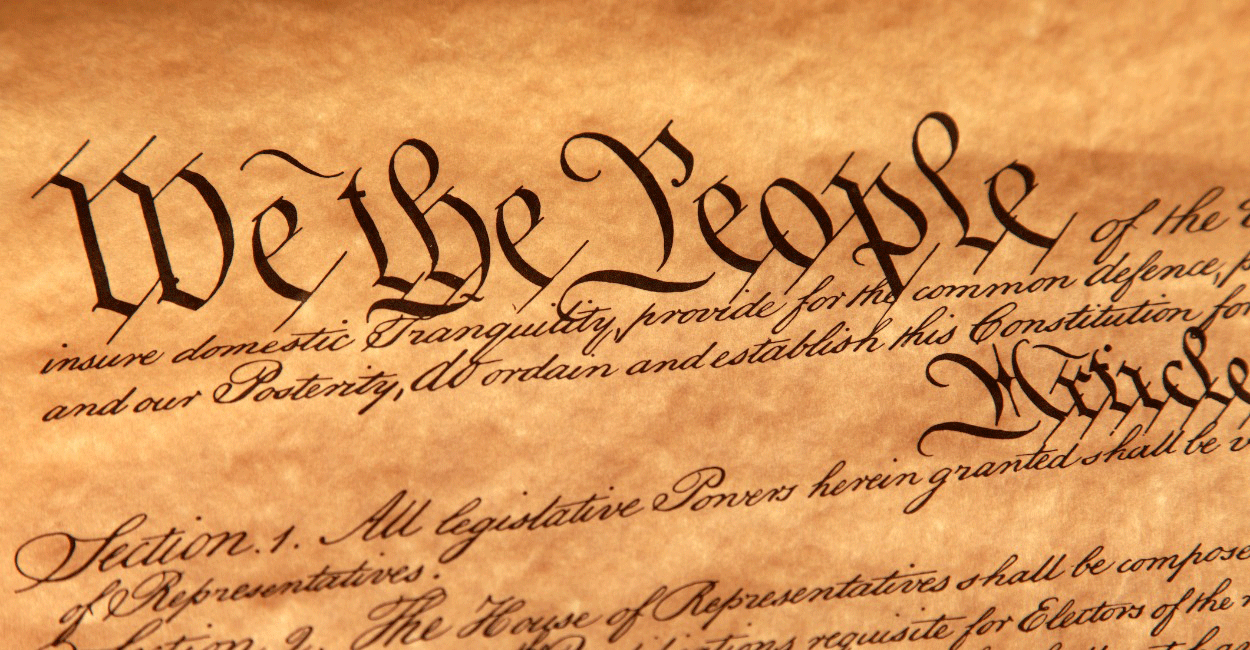 Last year, on Memorial Day, I was thinking about the sorry state of American politics and wondering how we ended up with a president who hadn’t even read the Constitution. I realized that was only possible because most Americans haven’t read it either. We’ve become a nation of consumers instead citizens. We expect good service from our politicians without even reading the yelp reviews before we let someone else elect them. That Memorial Day, I decided to be better than the president and read the Constitution. It took, like, 15 minutes. But when I was done, I couldn’t really remember what I read. I mean, the language is dated and there’s no plot. It’s pretty dry.
Last year, on Memorial Day, I was thinking about the sorry state of American politics and wondering how we ended up with a president who hadn’t even read the Constitution. I realized that was only possible because most Americans haven’t read it either. We’ve become a nation of consumers instead citizens. We expect good service from our politicians without even reading the yelp reviews before we let someone else elect them. That Memorial Day, I decided to be better than the president and read the Constitution. It took, like, 15 minutes. But when I was done, I couldn’t really remember what I read. I mean, the language is dated and there’s no plot. It’s pretty dry.
The Project
So on June 7, 2017, I announced a project to truly study the Constitution. Each week since then, with only a couple of exceptions, I have read one clause of the Constitution and tried to really think about what it means. I’ve looked up relevant Supreme Court cases to understand how each clause has been interpreted over time. Sometimes I get really into it because I really care about the subject and sometimes it’s a drag. You know, like being a citizen of a democracy. But I think I understand how things work better than I did before.
The Constitution
I started with the Preamble. Like modern writers, the Framers knew that you need a strong opening to hook people into reading more. Most people are familiar with this part (although I think it often gets confused with the Declaration of Independence, which does not have the weight of law).
We the People of the United States, in Order to form a more perfect Union, establish Justice, insure domestic Tranquility, provide for the common defence, promote the general Welfare, and secure the Blessings of Liberty to ourselves and our Posterity, do ordain and establish this Constitution for the United States of America.
The Constitution comprises seven Articles. Last week, I finally completed Article 1. The first article establishes the legislative branch of government and is all about checks and balances between that branch and the executive, and between federal and state governments. It has 10 sections, which each contain between one and eighteen clauses. (Section 8, which lists powers of Congress, is the behemoth with 18 clauses. Yes, it does read a lot like the begats in the Bible.)
Article 1 Sections
I have only just now realized that it would have made sense to write a post summarizing each section as I completed it. But we live and learn. All I have to offer, for anyone who wants to catch up, is a link to the first clause of each section I’ve studies so far.
Section 1 establishes a bicameral Congress.
Section 2 establishes the House of Representatives.
Section 3 establishes the Senate.
Section 4 deals with elections and Congressional scheduling.
Section 5 allows the two chambers of Congress to manage their own business – mostly.
Section 6 deals with Congressional pay and conflicts of interest.
Section 7 gets into the meat of how laws are actually made and passed.
Section 8 lists the powers of Congress.
Section 9 theoretically lists the limitations to Congressional power, but it’s mostly just a continuation of Section 8 with negative phrasing.
Section 10 is a small collection of odds and ends that close loopholes or clarify powers and restrictions already mentioned.
What’s Next
Starting next week, I will be studying Article 2, which deals with the Executive branch of government. I’m not even sure if it’s controversial anymore to say that things have gone haywire in the White House lately, so maybe a few people will be interested in what Article 2 has to say. It certainly should be easier to find connections between the clauses and current events.
I hope you’ll join me.




About the author